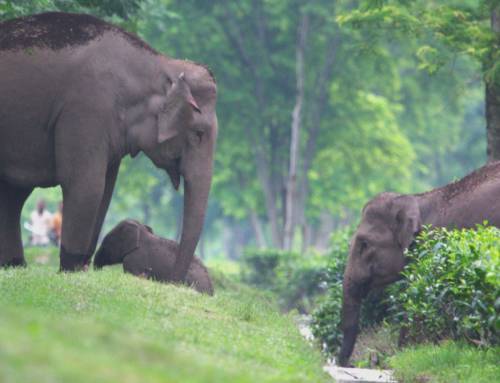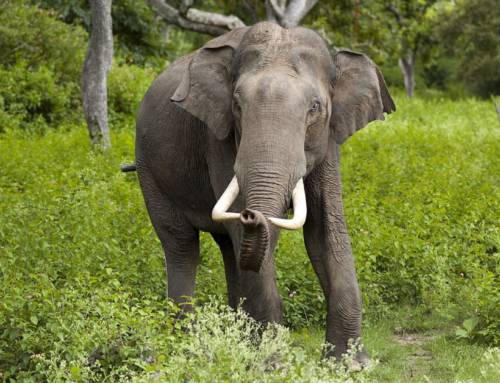Research Article: Karanth KK, Ranganathan P. Assessing Human-Wildlife Interactions in a Forest Settlement in Sathyamangalam and Mudumalai Tiger Reserves. Tropical Conservation Science. 2018;11. doi:10.1177/1940082918802758
Blog Author: Chandan Kumar Pandey
Key takeaways:
- 34% of households in Thengumarahada Mudumalai National Park experienced crop damage primarily due to wild pigs (71%) and elephants (44%), with an average annual loss of INR 7,450 (USD 108).
- 10% of households reported livestock depredation by predators such as leopards (19%), tigers (11%), and jackals (10%), with average losses of INR 2,360 (USD 35) per year.
- Common methods to protect crops included fencing (37%) and night-time vigilance (33%), but these measures did not significantly reduce losses. Only 11% of families used measures to protect livestock.
- The study covered 421 households, with an average landholding of 2.3 acres and a family size of four members. About 67% of respondents were literate, and 68% were born in the area.
- Despite facing conflicts with wildlife, 84% of people supported forest protection for future generations, and many believed in restricting forest use to safeguard wildlife.
- Only 29% of households were aware of government compensation programs for wildlife damage, and just 3% had received any compensation, highlighting a need for better communication and support.
Imagine sharing your backyard with wild elephants and tigers. Sounds exciting? For the residents of Thengumarahada, a village nestled within India’s protected tiger reserves, it’s a daily reality – one that comes with both beauty and challenges. Living close to wildlife can be both exciting and challenging. This blog looks at a study conducted by Dr Krithi Karanth and Priya Ranganathan in Thengumarahada, a village located between Sathyamangalam and Mudumalai tiger reserves in Tamil Nadu, India. The study aimed to understand how people and animals interact, especially when it comes to crop damage and livestock attacks. It also explored how local communities feel about conservation efforts and what could be done to improve human-wildlife interaticons in the landscape.
Many families in the village face problems with wild animals. About 34% of households reported that wild animals, especially wild pigs and elephants, damaged their crops. This usually happened between November and January, costing families an average of INR 7,450 (USD 108) each year. On the other hand, 10% of households experienced attacks on their livestock by leopards, tigers, and jackals, with losses averaging INR 2,360 (USD 35) per year. To protect their crops, families tried various methods like building fences, keeping watch at night, and using better lighting. Despite these efforts, these measures didn’t significantly reduce crop damage. For livestock, very few families took steps to prevent attacks, such as keeping animals under watch or reducing the use of communal grazing lands.
The study included 421 households, each with an average land size of 2.3 acres and four family members. About 67% of the respondents could read and write, and 68% were born in the area. Despite the challenges, 84% of the people believed that the forests should be protected for future generations. Many thought that restricting the use of forest land was the best way to protect wildlife. Interestingly, while 79% mentioned that women were more affected by wildlife conflicts, women generally had a positive attitude towards conservation.
The researchers surveyed households in Thengumarahada and nearby hamlets, gathering information on family size, land use, and experiences with wildlife conflicts. They also collected data on the families’ attitudes toward wildlife and conservation efforts. This information helped them understand the patterns and factors behind crop and livestock losses and how people felt about living near protected areas.
The study found that families growing rice were more likely to experience crop damage, while those growing bananas were less likely to face this problem. Larger families tended to suffer more crop damage, possibly because they had more crops to lose. Grazing livestock in the forest increased the chances of attacks by predators like leopards and tigers. However, many families continued this practice, highlighting the difficulty of changing long-standing habits. Larger landowners generally had a negative view of conservation efforts, likely due to concerns about restrictions on land use. Conversely, larger families tended to view conservation positively, appreciating the long-term benefits of protecting forests and wildlife. The study also found that only 29% of the people were aware of government compensation programs for wildlife damage, and just 3% had received any compensation. This indicates a need for better communication and support systems to help families deal with these challenges.
The study in Thengumarahada provides valuable insights into the complex relationship between people and wildlife in tiger reserves. It highlights the need for effective strategies to protect crops and livestock and improve communication about compensation programs. By addressing these issues, conservation efforts can better support both wildlife and the communities living near protected areas.
Link to the original article.




